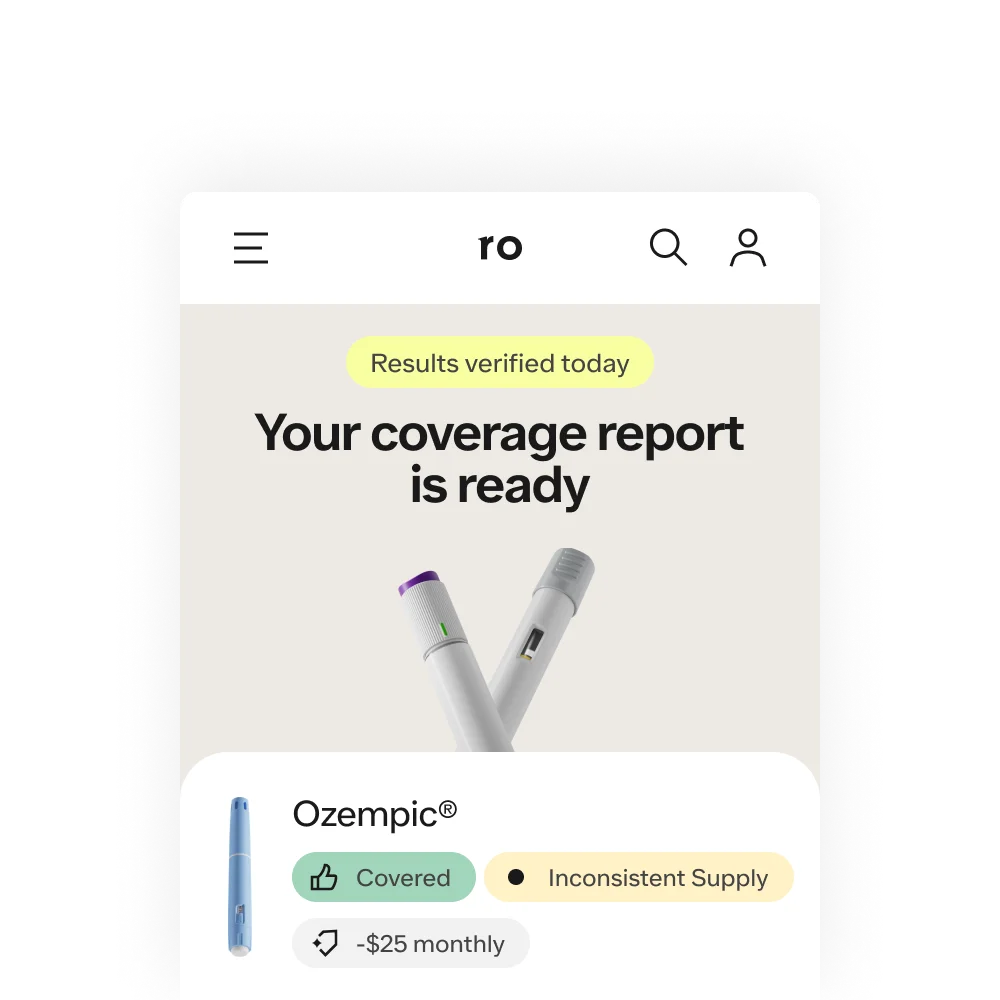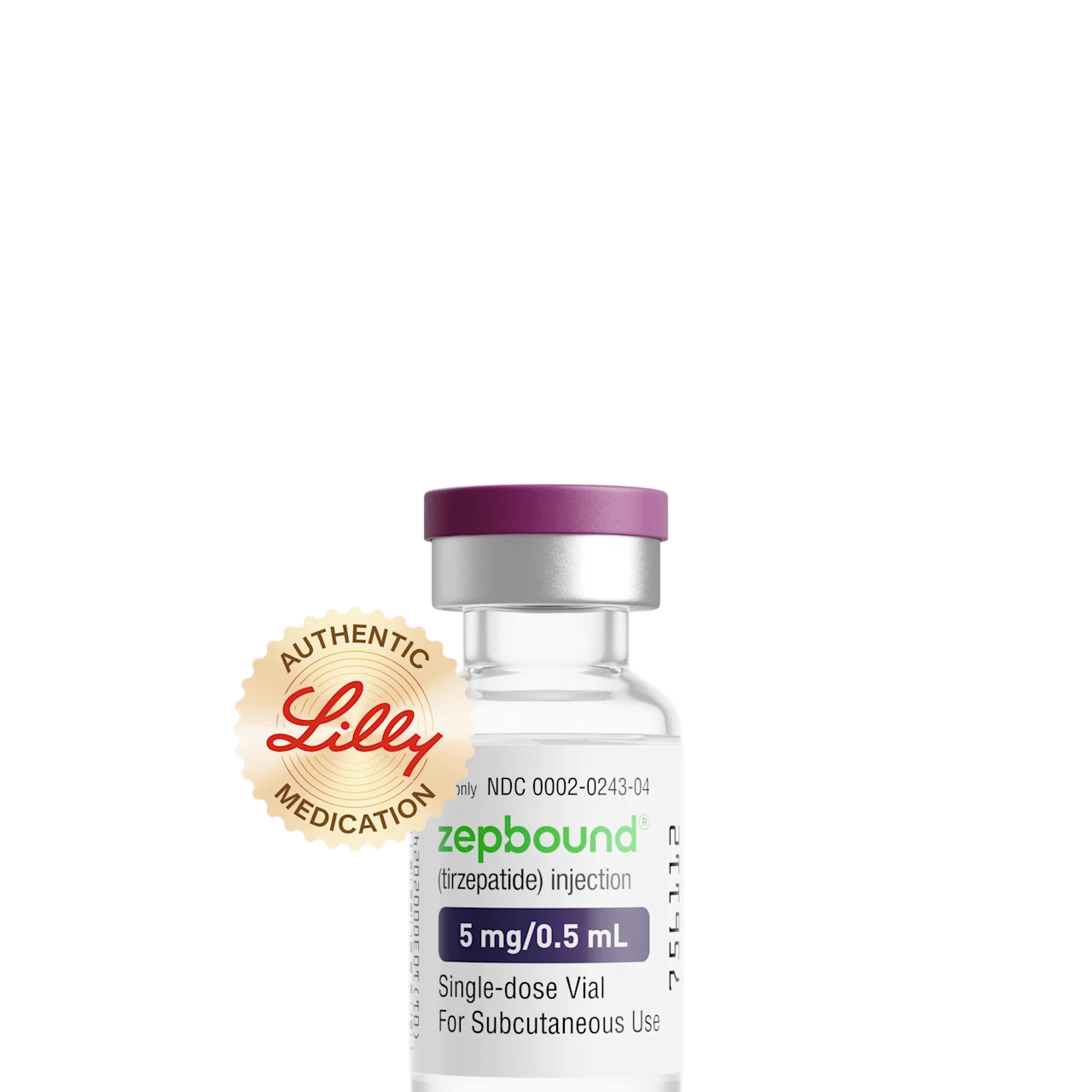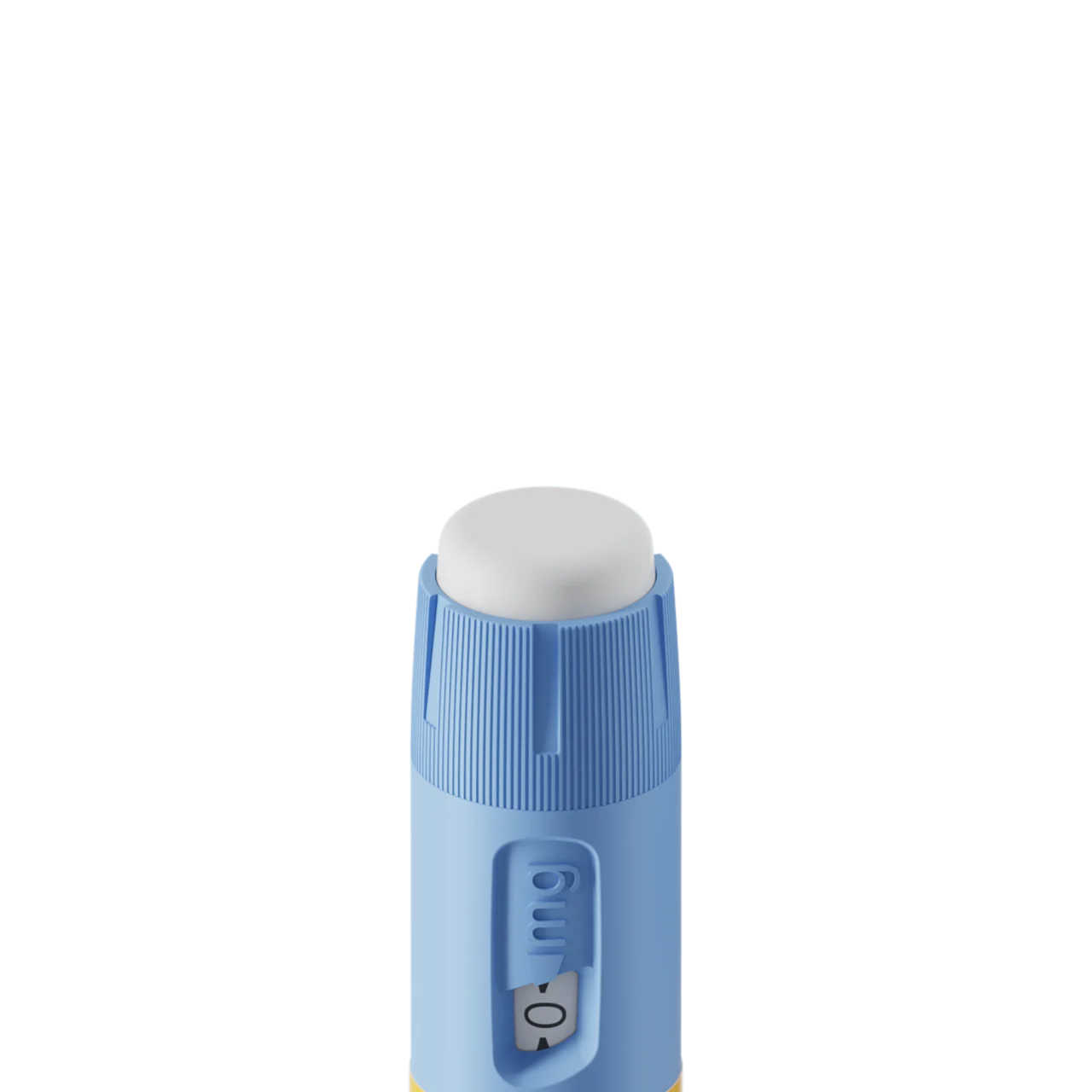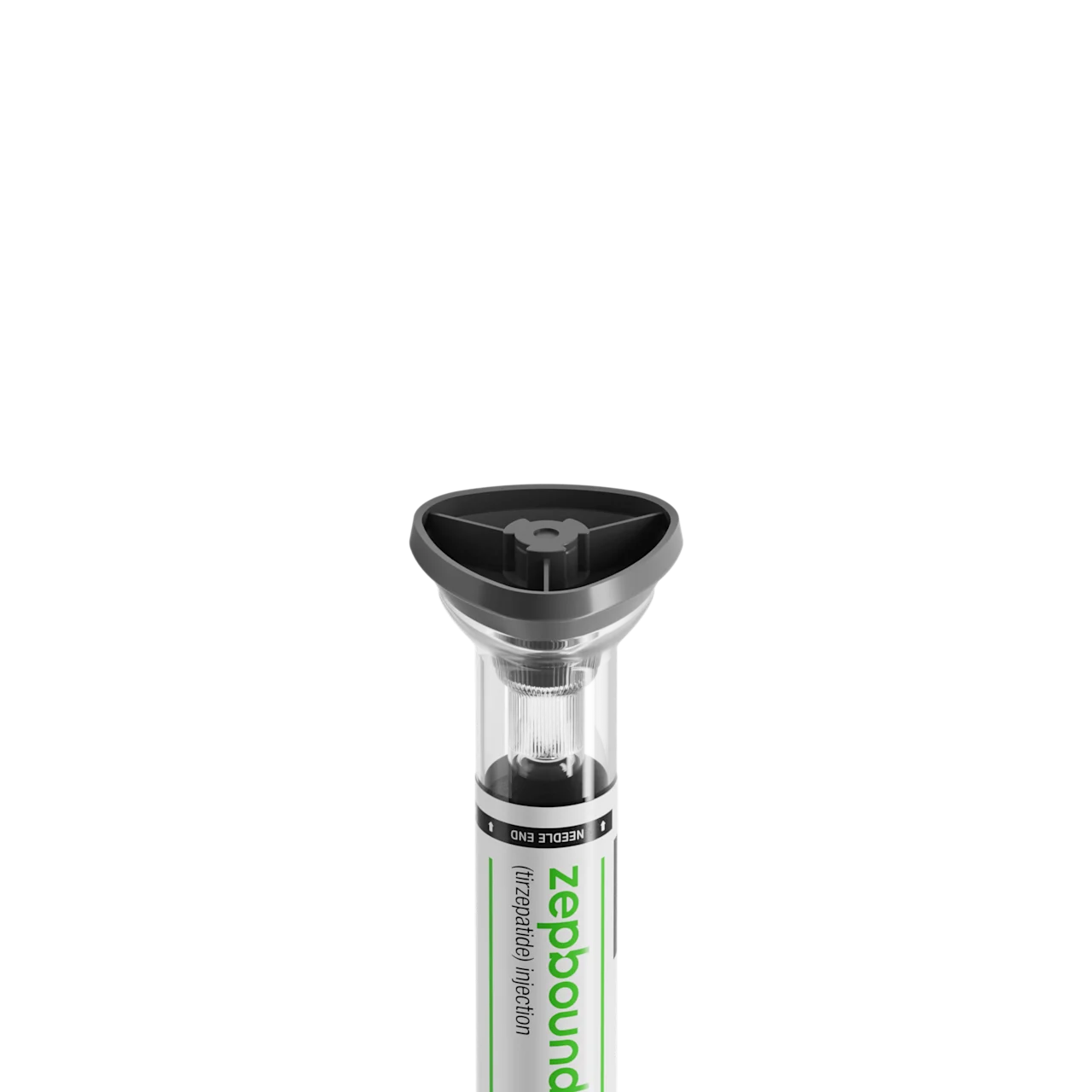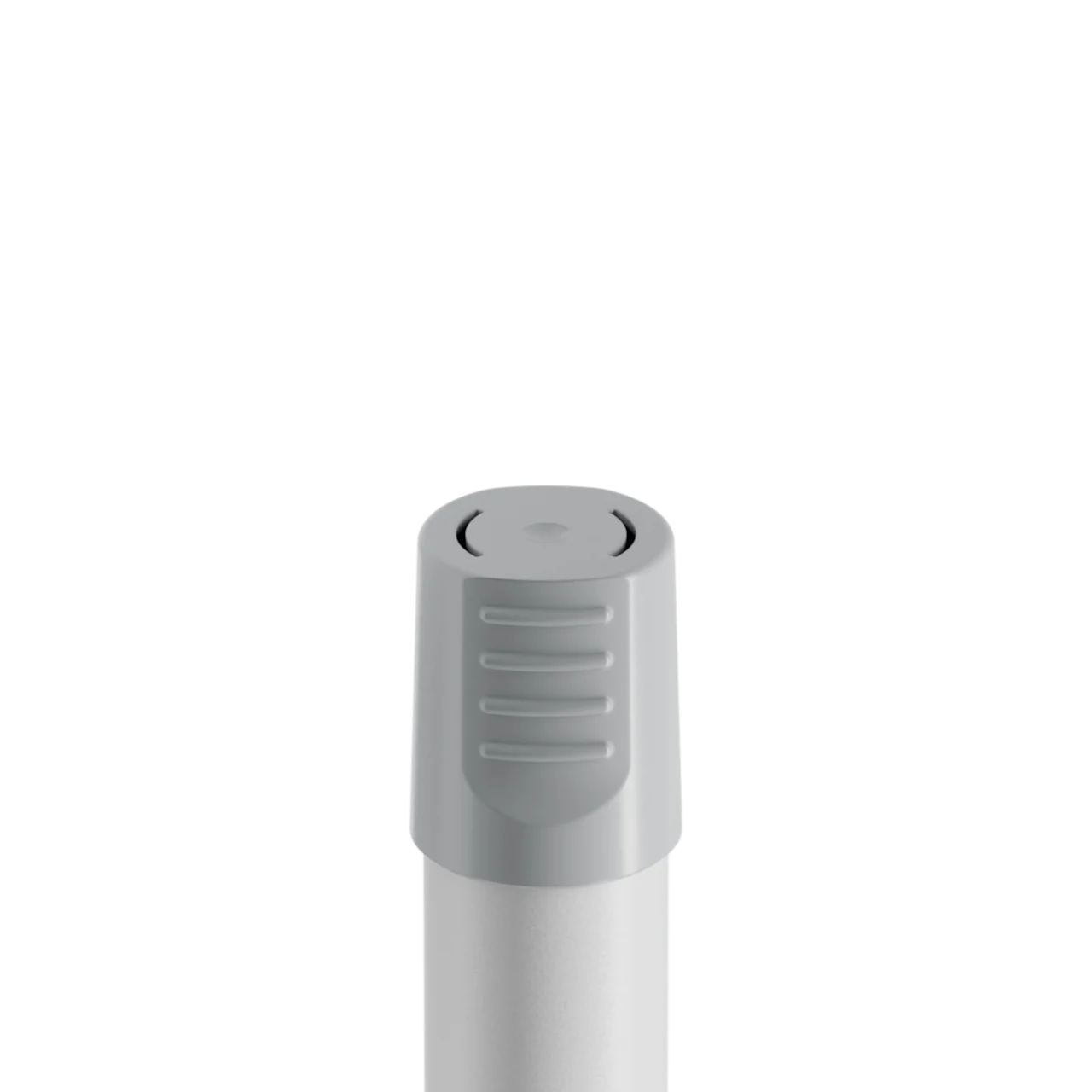Key takeaways
The exact cost of tirzepatide depends on several factors, including the prescribed brand-name drug, insurance coverage, whether you’ve met your deductible, and more.
The list price for a month's supply of tirzepatide is $1,079.77 for Mounjaro and $1,086.37 for Zepbound. The drugs’ manufacturer and pharmacies offer additional savings programs and discounts.
With insurance, both Zepbound and Mounjaro can cost as little as $25 per month.
Here's what we'll cover
Key takeaways
The exact cost of tirzepatide depends on several factors, including the prescribed brand-name drug, insurance coverage, whether you’ve met your deductible, and more.
The list price for a month's supply of tirzepatide is $1,079.77 for Mounjaro and $1,086.37 for Zepbound. The drugs’ manufacturer and pharmacies offer additional savings programs and discounts.
With insurance, both Zepbound and Mounjaro can cost as little as $25 per month.
Weight loss injections like Zepbound continue to grow in popularity for their effectiveness, but many people may find tirzepatide’s cost prohibitive. The US Food and Drug Administration (FDA) has approved tirzepatide (the active ingredient in Zepbound and Mounjaro) not only to help manage weight but also to treat type 2 diabetes, with recent approval for sleep apnea as well. Despite these benefits, the price of the prescription drug can be a barrier for many people interested in treatment.
So, how much does tirzepatide cost, exactly? Without insurance or discounts, the list price ranges from $1,079.77 to $1,086.37 per month. The amount you’ll pay, however, depends on the specific brand-name drug prescribed, your health insurance (if any), and other factors.
Fortunately, there are ways to save on tirzepatide. Ahead, we discuss the costs for different tirzepatide prescriptions on the market, the best ways to save money, and when insurance does (and doesn’t) cover the drug.
How much does tirzepatide cost without insurance?
Without insurance, the cost of tirzepatide is typically under $1,090 per month. But, it may end up being less depending on insurance coverage, discounts, coupons, and, of course, the specific brand-name tirzepatide-containing drug prescribed.
Before we dig deeper into the financials, a quick refresher: Tirzepatide is a dual glucagon-like peptide-1 (GLP-1) and glucose-dependent insulinotropic polypeptide (GIP) receptor agonist. That’s a long winded way to say tirzepatide mimics two gut hormones, resulting in improved glycemic control and managing body weight.
If this sounds similar to semaglutide (i.e. Ozempic, Wegovy, and Rybelsus), that’s because the two are alike, though research suggests tirzepatide may be more effective for weight loss.
Currently, tirzepatide is available in two FDA-approved brand-name prescription drugs: Zepbound and Mounjaro. It’s important to note that both work better alongside diet and exercise, and they are approved for different purposes. But more on that later. For now, let’s dive into how much they cost without insurance — at least as of publication.
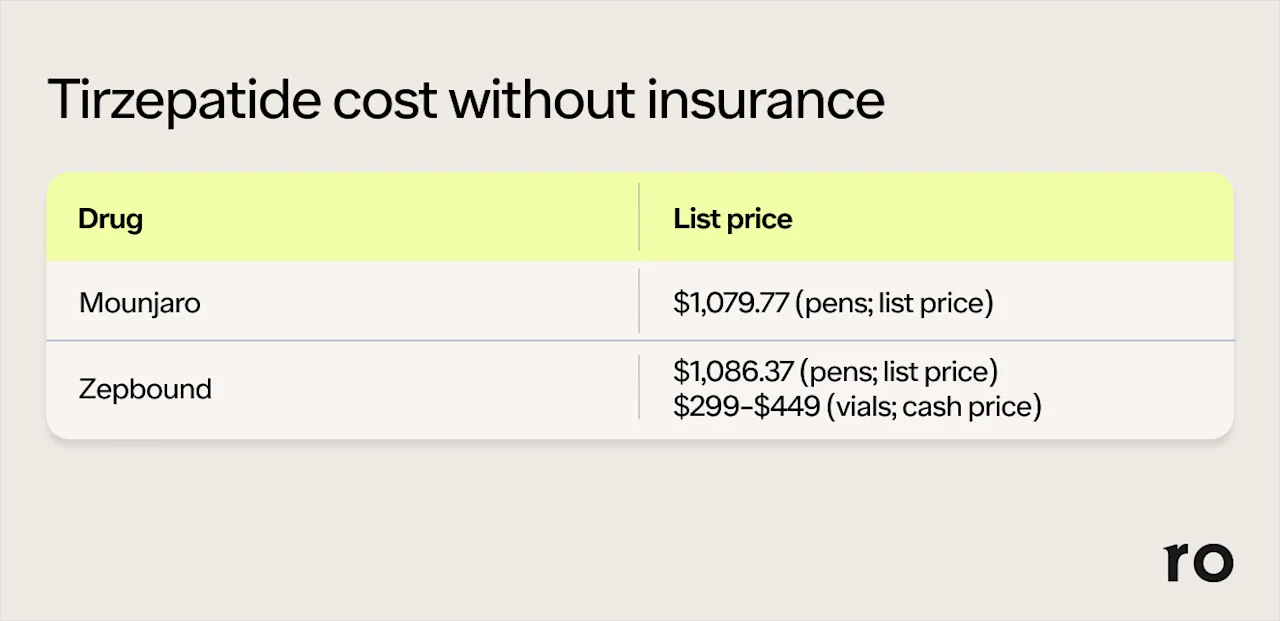
Mounjaro
With a list price of $1,079.77 for four pre-filled pens, Mounjaro can be expensive.
The good news? Most individuals with a prescription for Mounjaro will pay less. Even if you don't have access to health insurance or assistance programs, the amount you’ll pay at most pharmacies is usually less than the list price.
Eli Lilly also offers a Mounjaro Savings Card where commercially insured patients (aka those not insured through Medicare, Medicaid, or another government-funded insurance program) can get Mounjaro for as little as $25 a month. If you have commercial insurance coverage that doesn’t include Mounjaro, the savings card provides up to $463 off the monthly prescription medication. Sadly, the savings program doesn't extend to those who are uninsured or insured by a noncommercial payer.
With that in mind, here’s how much Mounjaro (four 5 mg/0.5ml pens) costs based on the retail prices at different pharmacies, according to GoodRx.
Walgreens | $1,292 |
CVS | $1,117 |
Walmart | $1,291 |
Kroger | $1,290 |
*While prices were valid at the time of publication, they may vary based on date and location. For the most accurate estimates, refresh the GoodRx searches and enter your zip code.
Zepbound
The list price for Zepbound is $1,086.37 for four pens (a monthly supply).
Eli Lilly is also the manufacturer of Zepbound, and its savings card offers the same discount for Zepbound: a price as low as $25 monthly, if commercially insured.
Don’t have insurance? Or just paying out-of-pocket? Zepbound single-dose vials may offer a more budget-friendly way to get the medication. Available through Ro or LillyDirect (the drugmaker’s self-pay pharmacy), you can get Zepbound vials for the following cash prices:
$299/month for 2.5 mg dose
$399 per month for 5 mg dose
$449 per month (with manufacturer offer) for 7.5 mg, 10 mg, 12.5 mg, and 15 mg doses
In case you’re unfamiliar, Ro has an integration with LillyDirect for patients who are prescribed Zepbound single-dose vials in the Body membership. In other words, if you get your Rx through Ro, you don’t have to worry about signing up for LillyDirect or even leaving your Ro account to get your single-dose vials of Zepbound delivered directly to your door.
Along with discounts and insurance coverage, factors like your pharmacy and zip code can impact the final price. Here’s an idea of how much four 2.5 mg/0.5mL pens of Zepbound cost at four pharmacies, according to GoodRx:
Walgreens | $1,294 |
CVS | $1,271 |
Walmart | $1,287 |
Kroger | $1,297 |
*While prices were valid at the time of publication, they may vary based on date and location. For the most accurate estimates, refresh the GoodRx searches and enter your zip code.
Compounded tirzepatide
Compounded drugs are custom-made based on a patient’s prescription. While these drugs are allowed under federal law, they don’t have FDA approval and may not have undergone a robust safety and manufacturing review.
Compounded tirzepatide typically costs much less than Zepbound and/or Mounjaro and features the same active ingredient as the brand-name versions. But it’s usually not covered by insurance, and the exact pricing varies depending on where you get and fill your Rx.
Does insurance cover tirzepatide?
Unfortunately, there’s no universal answer to the question, “how much is tirzepatide with insurance?” As it turns out, insurance coverage for tirzepatide can be a bit of a gray area. Some commercial health insurance plans cover Mounjaro, Zepbound, or both. When they do, the savings can be huge; for example, some insured individuals may be able to pay $25 for their monthly prescription of Mounjaro or Zepbound. It’s unlikely, however, that your insurance will cover compounded tirzepatide.
When Zepbound, Mounjaro, or both are covered by your plan, they will be listed in your insurance plan’s drug formulary. If not listed, you and your healthcare provider may be able to request prior authorization when the prescription is a medical necessity. The Obesity Action Coalition offers a templated prior authorization request and other resources to help you navigate insurance coverage.
Does Medicare cover tirzepatide?
Most Medicare Advantage and Part D prescription drug plans don’t cover tirzepatide. However, they are not prohibited from covering these (when prescribed for Type 2 diabetes), meaning your plan may cover Zepbound, Mounjaro, or both. If covered, you may still be responsible for part of the cost, depending on your plan’s deductible and copays.
If tirzepatide is prescribed for weight loss specifically, Medicare cannot cover the cost — even if your plan is through a Medicare Advantage provider. Organizations are advocating for this law to be changed, and a bill in congress may change this in the near future.
Does Medicaid cover tirzepatide?
Unlike Medicare, which has national standards for what is and isn’t covered, Medicaid coverage varies by state. Contact your state Medicaid agency or review your plan’s drug formulary to determine if tirzepatide is covered. Medicaid eligibility is contingent upon income requirements set by individual states. Like Medicare, you may be able to get tirzepatide covered under Medicaid if you are using it to treat type 2 diabetes or another health condition.
How to save on the cost of tirzepatide without insurance
Let’s face it: Paying upwards of $1,000 a month for tirzepatide may be out of budget. Luckily, there are ways to save.
The first is through the manufacturer's discount programs:
If uninsured or insurance doesn’t cover Zepbound: Eli Lilly offers a capped cash price of $299-$449 for Zepbound vials, depending on dosage, through Ro and LillyDirect.
If insurance doesn’t cover Mounjaro: You may enjoy up to $463 off. This discount, however, is reserved for those who are commercially insured, but Mounjaro isn’t covered by that commercial insurance plan.
If commercial insured: You may be able to get both Zepbound or Mounjaro for as little as $25 a month, so long as your commercial insurance plan covers the prescription
Pharmacy coupons and savings cards can also help reduce the cost of tirzepatide. Through the following online databases, you can check if your prescribed medication is eligible for discounts, estimate how much you may be able to save, and determine where these savings are accepted (e.g. CVS, Walgreens, and other retailers). Keep in mind that these types of discounts can be used instead of insurance plans, but not combined with them.
GoodRx: Free service that offers coupons on various medications.
SingleCare: Free service that offers coupons on various medications.
WellRx and Optum Perks: Free membership programs through which you can save up to 80% on drug prices, depending on the medication, pharmacy, and location. Both also offer coupons for specific medications and a general discount card for various drugs — both of which can be used at over 60,000 participating pharmacies across the US.
Costco Membership Prescription Program: Membership program for Costco members who are uninsured or underinsured that offers savings of up to 80% on drug costs, depending on the aforementioned factors. Program pricing only applies to in-person or mail-order prescriptions filled at Costco and participating neighborhood pharmacies.
How to get tirzepatide
Since tirzepatide is a prescription drug, it requires a prescription from a licensed healthcare provider. If you believe tirzepatide may be a good fit, schedule an appointment with a healthcare provider who can assess your symptoms and determine the best treatment plan.
Alternatively, you can get an Rx for tirzepatide through Ro’s Body membership, which offers:
A personalized treatment plan
1:1 health coaching
Ongoing support from healthcare providers
Insurance concierge services to help navigate tirzepatide coverage
(Note: Ro offers Zepbound, but not Mounjaro. Ro prescribes Zepbound pens as well as vials.)
No matter which option you choose, it’s important to remember that Zepbound, Mounjaro, and compounded tirzepatide work best in tandem with diet and exercise. Plus, the two brand-name prescriptions are FDA-approved for different medical needs.
Zepbound is FDA-approved for adults:
To reduce body weight and maintain long-term weight management in those who have excess weight and a weight-related health condition (e.g. high cholesterol, high blood sugar levels, high blood pressure, or type 2 diabetes)
To treat moderate to severe obstructive sleep apnea (OSA) related to higher body weight
Mounjaro is FDA-approved for type 2 diabetes but not weight loss. Sometimes, physicians prescribe Mounjaro off-label for weight loss to patients who have overweight or obesity but don’t have type 2 diabetes. This was more common before Zepbound was FDA-approved for weight loss, though it still occurs.
Compounded tirzepatide is not FDA-approved but is legally available. Zepbound, Mounjaro, and compounded tirzepatide may cause side effects, including nausea, headaches, and stomach pain, which is another reason why it is important to follow the advice of your doctor when deciding between medications.
Alternatives to tirzepatide
Sadly, tirzepatide — while highly successful in weight management — can be quite expensive. The good news? There may be more affordable alternatives available, which might be worth discussing with your healthcare provider.
Semaglutide
Weighing the pros and cons of tirzepatide vs. semaglutide? They’re both GLP-1 medications, and they act similarly in the body, as explained above. Tirzepatide has been shown to be more effective at weight loss than semaglutide, and it costs less. But semaglutide (Ozempic, Wegovy, and Rybelsus) still has an impressive track record of weight loss success — in separate studies, people who took semaglutide still lost about 15% of their body weight (vs. 2.4% weight loss with placebo), compared to about 21% with tirzepatide (vs. 3.1% in placebo group).
Novo Nordisk offers a patient assistance program for those on Medicare or uninsured. You may be able to get Ozempic or Rybelsus if you have type 2 diabetes at no cost if you qualify. It also offers savings programs for Ozempic, Wegovy, and Rybelsus to help offset the cost if you have private or commercial insurance.
Here’s a quick look at the cost of a one-month supply of semaglutide, by drug, according to GoodRx:
Pharmacy | Ozempic | Wegovy | Rybelsus |
|---|---|---|---|
Walgreens | $1,174 | $1,618.92 | $1,186 |
CVS | $1,165 | $1,590.05 | $1,164 |
Walmart | $1,185 | $1,620.02 | $1,171 |
Costco | $2,167 | $1,544 | $1,206 |
*While prices were valid at the time of publication, they may vary based on date and location. For the most accurate estimates, refresh the GoodRx searches and enter your zip code.
Liraglutide
Liraglutide is the active ingredient in brand name medications Victoza and Saxenda. Victoza is FDA-approved to treat type 2 diabetes, while Saxenda is approved for weight loss. It belongs to the same class of GLP-1 receptor agonists as tirzepatide. A clinical trial on Saxenda found people were able to lose 8% of their body weight.
Prices will vary depending on your location and pharmacy, but here’s an example of how much a 30-day supply of Saxenda costs, according to GoodRx:
Walgreens | $1,639.90 |
CVS | $1,590.03 |
Walmart | $1,610.43 |
Costco | $1,615.10 |
Metformin
Metformin (Glumetza, Fortamet) is an oral medication that helps control blood sugar in people with type 2 diabetes. It’s difficult to compare metformin against a GLP-1 receptor agonist like tirzepatide. While people who take metformin can lose weight, it’s not FDA-approved as a weight loss medication. Unlike the aforementioned medications, it’s an oral drug not an injection.
Here’s a quick look at the price of a 30-day supply of 500 mg extended-release tablets of generic metformin, according to GoodRx:
Walgreens | $23.60 |
CVS | $28.28 |
Walmart | $4 |
Sam’s Club | $8.25 |
*While prices were valid at the time of publication, they may vary based on date and location. For the most accurate estimates, refresh the GoodRx searches and enter your zip code.
Weight loss pills
While weight loss pills don’t seem to be as popular right now, they are still effective as a weight management tool. The FDA has approved these prescription weight loss medications for long-term weight management:
Prices will vary depending on your location and pharmacy, but here’s an idea of how much a 30-day supply of each prescription medication costs, according to GoodRx:
Pharmacy | Qsymia | Contrave | Xenical |
|---|---|---|---|
Walgreens | $287.72 | $753.02 | $780.99 |
CVS | $250.19 | $740.30 | $673.99 |
Walmart | $251.02 | $750.55 | $682.47 |
Costco | $260.02 | $768.21 | $726.48 |
*While prices were valid at the time of publication, they may vary based on date and location. For the most accurate estimates, refresh the GoodRx searches and enter your zip code.
Alli, a lower dose of orlistat, is also available without a prescription from various retailers. A starter pack typically costs around $45, and coupons are available on the product website.
Rx weight loss with Ro
Get access to prescription weight loss medication online
Bottom line
When it comes to answering the question, “how much does tirzepatide cost?” you need to take into account your insurance coverage (if any) and the savings available to you. And those are just two of the many factors that can affect the cost of tirzepatide. The specific brand-name drug prescribed — Mounjaro vs. Zepbound — can also impact how much you’ll have to shell out.
Just like any other prescription medication, the cost of tirzepatide can vary depending on several factors, including the specific drug prescribed, your location, insurance coverage, and your preferred pharmacy. Unlike many other medications, however, there is no generic version for tirzepatide. Brand-name drugs usually come at a steeper price than generics.
Without insurance, the cost of tirzepatide is typically under $1,090 per month. More specifically, the list price for Mounjaro is $1,079.77, and for Zepbound, it is $1,086.37.
In addition to insurance coverage, manufacturer offerings (e.g. savings cards) and pharmacy coupons can help reduce the cost of your Rx. In the case of Zepbound, in particular, paying cash for single-dose vials can also allow you to get your meds without breaking the bank (at least not too much).
Insurance coverage for tirzepatide depends on your specific plan. Often, insurers only cover a medication when it’s prescribed for an FDA-approved indication, though your healthcare provider may be able to submit a prior authorization to help prove that the prescribed drug is a medical necessity.
Frequently asked questions (FAQs)
How much does tirzepatide cost per month?
Tirzepatide’s monthly cost ranges based on the branded drug, insurance coverage, your location, and pharmacy, among other factors. If commercially insured, the drug can cost as little as $25 a month, and there are savings programs for those without insurance coverage for tirzepatide.
That said, keep in mind Eli Lilly’s list prices for brand-name tirzepatide, as outlined in the table below.
| Mounjaro | Zepbound |
|---|---|---|
Dose | 5 mg/week | 2.5 mg/week |
Cost | $1,079.77/month | $1,086.37/month (pens; list price) $299/month (vials; cash price) |
What is the cheapest way to get tirzepatide?
The cheapest way to get tirzepatide depends on your insurance coverage, location, and other factors. For those who are commercially insured (and Zepbound or Mounjaro are covered by their plan), Eli Lilly offers a discount card for either medication for as little as $25 a month. Those with commercial insurance that doesn’t cover Mounjaro can also enjoy up to $463 off that prescription only.
For those who are uninsured or insured by Medicare or Medicaid, Ro and LillyDirect offer a cash price of $299-$449 for Zepbound, with the exact price determined by dosage. Specific pharmacies (like Costco) and organizations like GoodRx and SingleCare offer additional savings.
Will insurance cover tirzepatide?
Not all insurance plans cover tirzepatide, but some do. This is the case whether you are insured through a private company, Medicare, Medicaid, or another insurance payer. To find out if your plan offers coverage, refer to your policy’s drug formulary.
How can you get Mounjaro for $25?
Eli Lilly currently offers a Mounjaro Savings Card that allows eligible, commercially insured patients to pay as little as $25 for a one- or three-month prescription. To qualify, your insurance plan must include coverage for Mounjaro. If it doesn’t, the savings card may provide up to $463 off a one-month prescription. Unfortunately, those with government-funded insurance plans are not eligible for the manufacturer’s savings card.
What is the generic of tirzepatide?
Currently, there isn’t a generic version of tirzepatide. Tirzepatide is only available as the active ingredient in the brand-name drugs Mounjaro and Zepbound — both of which are FDA-approved for different indications,
DISCLAIMER
If you have any medical questions or concerns, please talk to your healthcare provider. The articles on Health Guide are underpinned by peer-reviewed research and information drawn from medical societies and governmental agencies. However, they are not a substitute for professional medical advice, diagnosis, or treatment.
Zepbound Important Safety Information: Read more about serious warnings and safety info.
Mounjaro Important Safety Information: Read more about serious warnings and safety info.
GLP-1 Important Safety Information: Read more about serious warnings and safety info.
Ozempic Important Safety Information: Read more about serious warnings and safety info.
Wegovy Important Safety Information: Read more about serious warnings and safety info.
Saxenda Important Safety Information: Read more about serious warnings and safety info.
References
Centers for Medicare & Medicaid Services. (n.d.). Contact us.* U.S. Department of Health and Human Services.* Retrieved from https://www.medicaid.gov/about-us/contact-us/index.html
Centers for Medicare & Medicaid Services. (2024). Medicare & you 2024 (Publication No. CMS-10050). U.S. Department of Health and Human Services. Retrieved from https://www.medicare.gov/publications/10050-Medicare-and-You.pdf
Costco. (n.d.). Member Prescription Program. Retrieved from https://www.costco.com/cmpp
Eli Lilly. (n.d.). Authentic Zepbound shipped directly to you. Retrieved from https://lillydirect.lilly.com/pharmacy/zepbound
Eli Lilly. (2023). FDA Approves Lilly's Zepbound (tirzepatide) for Chronic Weight Management, a Powerful New Option for the Treatment of Obesity or Overweight with Weight-Related Medical Problems. Retrieved from https://investor.lilly.com/news-releases/news-release-details/fda-approves-lillys-zepboundtm-tirzepatide-chronic-weight
Eli Lilly-a. (2024). How much should I expect to pay for Mounjaro? Retrieved from https://pricinginfo.lilly.com/mounjaro
Eli Lilly. (2025). How much should I expect to pay for Zepbound® (tirzepatide)? Retrieved from https://pricinginfo.lilly.com/zepbound
Eli Lilly-b. (2024). Savings Options for Mounjaro. Retrieved from https://mounjaro.lilly.com/savings-resources?_gl=1%2a1x3hpds%2a_gcl_au%2aMTU1NDkzNTU1MS4xNzIzNjQ2OTYx#savings
Eli Lilly-c. (2024). Savings Options for Zepbound. Retrieved from https://zepbound.lilly.com/coverage-savings
Farzam, K. & Patel, P. (2024). Tirzepatide. National Library of Medicine. Retrieved from https://www.ncbi.nlm.nih.gov/books/NBK585056/
GoodRx. (n.d.). Welcome to GoodRx for HCPs. Retrieved from https://www.goodrx.com/hcp
H.R. 4818, 118th Cong. (2023). Unemployment Insurance Improvement and Modernization Act. Retrieved from https://www.congress.gov/bill/118th-congress/house-bill/4818
Jasterboff, A. M., Aronne, L. J., Ahmad, N. N., et al. (2022). Tirzepatide Once Weekly for the Treatment of Obesity. New England Journal of Medicine, 387(3), 205-216. Retrieved from https://www.nejm.org/doi/full/10.1056/NEJMoa2206038
Optum Perks. (n.d.). Get your free prescription discount card! Retrieved from https://perks.optum.com/discount-card
Pi-Sunyer, X., Astrup, A., Fujioka, A., et al. (2015). A randomized, controlled trial of 3.0 mg of liraglutide in weight management. New England Journal of Medicine, 373(3), 11-22. doi: 10.1056/NEJMoa1411892. Retrieved from https://www.nejm.org/doi/full/10.1056/nejmoa1411892
SingleCare-a. (n.d.). Mounjaro Coupons & Prices. Retrieved from https://www.singlecare.com/prescription/mounjaro?q=Mounjaro
SingleCare-b. (n.d.). SingleCare. Retrieved from https://www.singlecare.com/
SingleCare-c. (n.d.). Zepbound Coupons & Prices. Retrieved from https://www.singlecare.com/prescription/zepbound?q=Zepbound
Tchang, B. G., Aras, M., Kumar, R. B., et al. (2024). Pharmacologic Treatment of Overweight and Obesity in Adults. Endotext [Internet]. Retrieved from https://www.ncbi.nlm.nih.gov/books/NBK279038/
U.S. Food and Drug Administration (FDA). (2024). Compounding and the FDA: Questions and Answers. Retrieved from https://www.fda.gov/drugs/human-drug-compounding/compounding-and-fda-questions-and-answers
U.S. Food & Drug Administration (FDA-a). (2025). Highlights of Prescribing Information: Mounjaro (tirzepatide) Injection, for subcutaneous use. Retrieved from https://www.accessdata.fda.gov/drugsatfda_docs/label/2025/217806s031lbl.pdf
U.S. Food and Drug Administration (FDA-b). (2025). Highlights of Prescribing Information: Saxenda (liraglutide) injection, for subcutaneous use. Retrieved from https://www.accessdata.fda.gov/drugsatfda_docs/label/2025/206321s022lbl.pdf
U.S. Food and Drug Administration (FDA-c). (2025). Highlights of Prescribing Information: Victoza (liraglutide) injection, for subcutaneous use. Retrieved from https://www.accessdata.fda.gov/drugsatfda_docs/label/2025/022341s046lbl.pdf
U.S. Food & Drug Administration (FDA-d). (2025). Highlights of Prescribing Information: Zepbound (tirzepatide) Injection, for subcutaneous use. Retrieved from https://www.accessdata.fda.gov/drugsatfda_docs/label/2025/217806s031lbl.pdf
WellRx. (n.d.). Get Your Rx Discount Card. Retrieved from https://www.wellrx.com/rx-discount-card/enroll/
Wilding, J. P. H., Batterham, R. L., Calanna, S, et al. (2021). Once-Weekly Semaglutide in Adults with Overweight or Obesity. New England Journal of Medicine, 384(11), 989-1002. doi: 10.1056/NEJMoa2032183. Retrieved from https://www.nejm.org/doi/full/10.1056/NEJMoa2032183
Williams, E., Rudowitz, R., & Bell, C. (2024). Medicaid coverage of and spending on GLP-1s. Kaiser Family Foundation (KFF). Retrieved from https://www.kff.org/medicaid/issue-brief/medicaid-coverage-of-and-spending-on-glp-1s/
Young, G. M., Bansal, K., Riello, R. J., 3rd, et al. (2024). Medicare Coverage and Patient Out-of-Pocket Costs for Cardiovascular-Kidney-Metabolic Medications. JAMA Network Open, 7(5), e2412437. doi: 10.1001/jamanetworkopen.2024.12437. Retrieved from https://www.ncbi.nlm.nih.gov/pmc/articles/PMC11109768/



